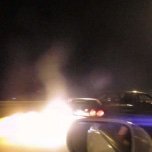Noisy Attessa
Announcements
-
Similar Content
-
Latest Posts
-
By TurboTapin · Posted
Even Phillips screws here are now mostly a hybrid that allow Robertson to also fit into it. They have accepted defeat haha. @GTSTBOY -
I'll bet the 34 one does work in a 33 if it worked in a 32, like a throttle cable the only things that matter are the connection at each end and the cable not being too short (too long is OK). The good thing is the 34 is sintered metal while 32, and I think I saw 33) are plastic ends so likely to last longer.....if you can find one,
-
Well, it's just a solid core cable in an outer. Buy a (longer) cable for something else, take them both apart and build one for the 34?
-
Busted a pretty new stock S3 box with 370 rwkw. 3rd gear was stripped bear. OSG gear set with a plate. Busted a tooth off in 2nd. Roughly 770 nm/472 kw atw. Nismo coppermix clutch used in both setups.
-







Recommended Posts
Create an account or sign in to comment
You need to be a member in order to leave a comment
Create an account
Sign up for a new account in our community. It's easy!
Register a new accountSign in
Already have an account? Sign in here.
Sign In Now